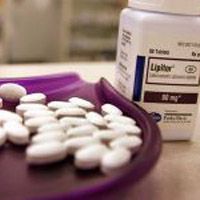Article
Statins for Everyone: Maybe, Maybe Not
Author(s):
The 2013 American College of Cardiology/American Heart Association guideline for management of low-density lipoprotein cholesterol to reduce atherosclerotic cardiovascular disease risk identified adults who could benefit from moderate- to high-intensity statin use.

The 2013 American College of Cardiology/American Heart Association (ACC/AHA) guideline for management of low-density lipoprotein cholesterol (LDL-C) to reduce atherosclerotic cardiovascular disease (ASCVD) risk identified adults who could benefit from moderate- to high-intensity statin use. The four groups who should be treated include adults who have:
- Clinical ASCVD
- Primary elevations of LDL-C >190 mg/dL
- LDLC 70 mg/dL to 189 mg/dL, age 40 to 75 years and comorbid diabetes
- No clinical ASCVD or diabetes but age 40 to 75 years, LDL-C 70 to 189 mg/dL and 10-year Estimated ASCVD risk of ≥7.5 %
What should clinicians do when they see at-risk patients who do not clearly match one of these statin-benefit groups?
A review in the November 2014 issue of Current Atherosclerosis Report attempts to answer that question. They indicate that patients that don’t fall into the 4 categories but raise concerns include patients with chronic kidney disease; patients with diabetes who are younger than 40 or older than 75; patients with heart failure; the elderly; younger patients with LDL-C >190 mg/dL and special populations (women and minority patients).
This review consolidates information from Kidney Disease: Improving Global Outcomes, the 2013 AHA Scientific Statement on Secondary Prevention of Atherosclerotic Cardiovascular Disease in Older Adults, the ADA and AACE recommendations for management of dyslipidemia in diabetics, and the 2013 (ACCF)/AHA Guideline for the Management of Heart Failure.
Exact recommendations are too extensive to summarize here for the same reasons that the ACC/AHA guideline made no general recommendations in these populations. In patients with CKD, age, disease stage, and comorbidities influence the decision, as does the patient’s drug regimen when dialysis is started.
Diabetics younger than 40 years may need statin therapy if they have multiple CVD risk factors or if LDL-C >100 mg/dl after lifestyle changes, but better evidence from clinical trials is needed. Experts have not made specific initiation, continuation, or discontinuation recommendations diabetics older than 75.
The authors make a general recommendation for elderly patients. They advise caution with statin use in older patients with very advanced age, female sex, small body size, fatty liver disease, or multiple comorbidities which may predispose to serious adverse events.




